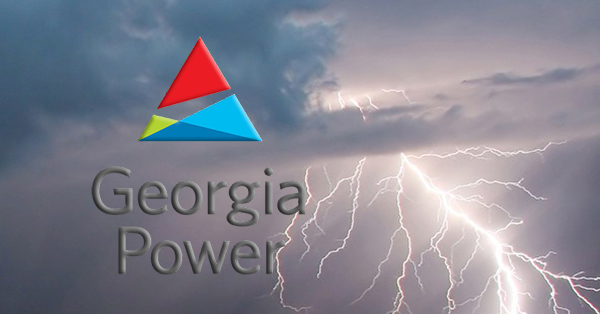
Tropical Storm Elsa is expected to cross into Georgia this week, bringing heavy rains and gusty winds to the southern and coastal parts of the state.
Georgia Power encourages customers to monitor local weather conditions and keep safety first as inclement weather moves in. The company is ready to respond to any service interruptions as quickly and safely as possible.
Customers are encouraged to prepare, stay weather aware and keep safety in mind as dangerous conditions can exist following storms. The company has developed a series of storm videos addressing customers’ frequently asked questions about storm response and restoration that can be found here. Customers should follow @GeorgiaPower on Twitter and at www.GeorgiaPower.com/Storm for storm tips, information about restoration efforts, customer service and more.
Severe weather can happen anytime across Georgia:
- Before a Storm: Know your risks of flooding and tropical storm or hurricane strength winds. Check your emergency kit, unplug major appliances and charge cell phones in case you lose power.
- During a Storm: Have several ways to receive emergency notifications and weather updates. Take safe shelter inside a sturdy building away from windows and doors. Avoid contact with conductors of electricity – appliances, metal objects and water.
- After a Storm: Never touch any downed or low-hanging wire, including telephone or TV wires that touch a power line. Never pull tree limbs off power lines or enter areas with debris or downed trees as downed power lines may be buried in wreckage. Additionally, do not walk or drive through standing water or step onto saturated ground where downed lines may be present.
After the Storm Safety Tips:
- Watch for downed wires. Downed power lines may be hidden by debris or fallen trees.
- Never touch any downed wire or attempt to remove tree branches from power lines – it can kill.
- Don’t step in standing water or saturated ground where downed lines may be present. They could be electrified.
- Avoid chain link fences. They may be electrified by a downed line out of sight and conduct electricity over great distances.
- Watch for Georgia Power crews working across the state. If driving, move over one lane for utility vehicles stopped on the side of the road – it’s the law in Georgia.
- Protect electronics and appliances. Disconnect or turn off any appliances that will start automatically when power returns to avoid overloading circuits when power is restored.
Additional Tools You Can Use:
- Outage & Storm Center – Available at www.GeorgiaPower.com/Storm, customers can visit this site to sign up for Outage Alerts, report and check the status of outages, and access useful safety tips and information. Customers can report and check the status of an outage 24 hours a day by contacting Georgia Power at 888-891-0938.
- Outage Map – Housed within the Outage & Storm Center, Georgia Power’s interactive Outage Map provides near real-time information, allowing users to see where outages are occurring across the state and track estimated restoration times.
- Georgia Power Mobile App – Download the Georgia Power mobile app for Apple and Android devices to access storm and outage information on the go.
- Outage Alerts – Subscribe to the free Georgia Power Outage Alert service to receive personalized notifications and updates via text message.
Infrastructure Investment – Reliability and Resiliency
The company continually invests in infrastructure to increase the day-to-day reliability of its systems and shorten outage and repair time. The company’s use of Smart Grid technology and increased automation in recent years mean an increased ability to more quickly isolate outages that do occur to smaller numbers of customers and reroute power remotely for improved reliability.
In addition, Georgia Power’s operational plans, systems, infrastructure and generating plants are all designed to enhance the resiliency of the network to best withstand major occurrences, such as severe weather events, including tornadoes, hurricanes and extreme heat or cold. Resiliency investments include upgrading transmission and distribution infrastructure across the power grid, including making power lines more durable.
SOURCE Georgia Power


Bulloch Public Safety
12/12/2025 Booking Report for Bulloch County

Georgia Politics
Gov. Kemp to Sen. Padilla: Stop Playing Politics With American Hero

Bulloch Public Safety
12/11/2025 Booking Report for Bulloch County

Bulloch Public Safety
11/24/2025 Booking Report for Bulloch County

Bulloch Public Safety
12/01/2025 Booking Report for Bulloch County

Bulloch Public Safety
11/17/2025 Booking Report for Bulloch County

Bulloch Public Safety
11/26/2025 Booking Report for Bulloch County

Bulloch Public Safety
12/08/2025 Booking Report for Bulloch County






